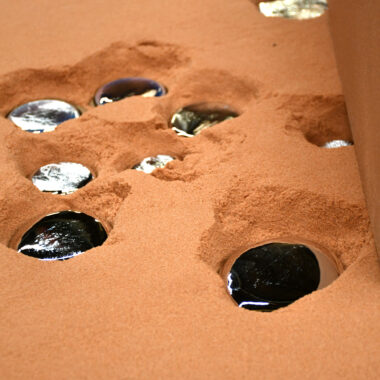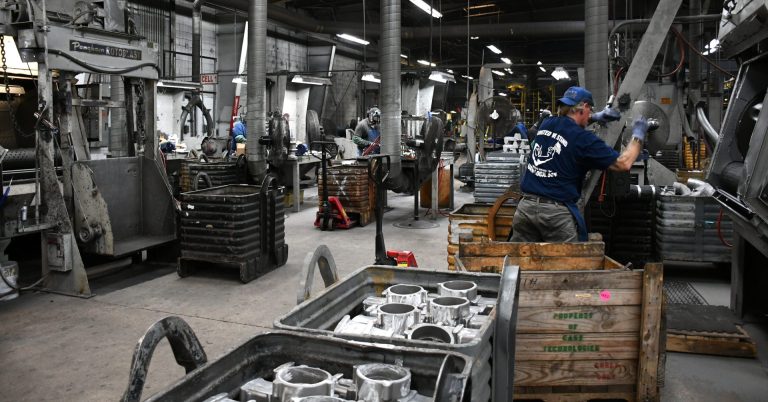Crafting Brilliance: Navigating the Globe About Aluminum Casting
Crafting Brilliance: Navigating the Globe About Aluminum Casting
Blog Article
Crafting Perfection: How to Accomplish High-Quality Light Weight Aluminum Castings Every Single Time
In the world of light weight aluminum casting, the quest of excellence is a continuous journey that requires a precise approach and a keen understanding of the details included. Attaining consistent top notch aluminum castings demands a comprehensive grasp of the processes, from selecting the suitable alloy to implementing exact mold designs and thoroughly managing spreading specifications.
Recognizing Light Weight Aluminum Spreading Processes
Light weight aluminum casting procedures, crucial in the manufacturing industry, entail the complex transformation of liquified aluminum into strong types via a series of very carefully regulated actions. Recognizing these procedures is paramount to accomplishing top notch light weight aluminum castings continually - about aluminum casting. The main techniques made use of in aluminum casting are pass away casting, sand casting, and financial investment spreading

Each of these processes has its benefits and is picked based on factors like intricacy, volume, and wanted finish of the light weight aluminum spreading. about aluminum casting. Understanding the complexities of these techniques is essential for makers intending to create high-quality aluminum castings regularly
Choosing the Right Light Weight Aluminum Alloy
Picking the ideal aluminum alloy is a vital decision in the manufacturing of top notch aluminum castings. The option of alloy considerably influences the residential properties and qualities of the end product. Different light weight aluminum alloys supply differing levels of stamina, corrosion resistance, machinability, and thermal conductivity. When selecting a light weight aluminum alloy for spreading, it is vital to consider the particular requirements of the application to ensure optimum efficiency.
One of the most generally utilized light weight aluminum alloys for spreading is A356 - about aluminum casting. For applications calling for high strength, 7075 light weight aluminum alloy is a prominent choice due to its extraordinary strength-to-weight ratio.
In enhancement to mechanical buildings, considerations such as expense, schedule, and post-casting procedures should likewise influence the selection of the right aluminum alloy. By carefully assessing these variables, producers can ensure the manufacturing of top notch light weight aluminum castings that fulfill the wanted specs.
Applying Proper Mold And Mildew Style
Developing an effective mold and mildew design is essential for ensuring the effective production of high-quality light weight aluminum castings. Correct mold and mildew layout plays a significant role in achieving the desired characteristics of the end product. To apply an effective mold and mildew style, variables such as material flow, cooling rates, and component geometry should be carefully considered.
One secret facet of mold and mildew design is making sure proper filling and solidification of the aluminum within the mold and mildew dental caries. This includes designing runner and gating systems that help with smooth metal circulation and protect against problems such as air entrapment or incomplete filling. In addition, including air conditioning channels into the mold style assists manage solidification prices and decrease the danger of porosity or contraction flaws.

Controlling Spreading Parameters

Guaranteeing Post-Casting Top Quality Checks
To preserve the high quality of aluminum castings, thorough post-casting high quality checks are essential. After the spreading procedure is finished, it is crucial to ensure that the last items meet the Full Article wanted standards and specs. Among the main quality checks entails evaluating the surface area coating of the spreadings to recognize any kind of defects such as porosity, splits, or surface area irregularities. This visual evaluation is frequently supplemented by non-destructive testing approaches like ultrasonic testing or color penetrant examination to detect interior defects that might endanger the honesty of the casting.
Dimensional accuracy is one more vital facet that must be confirmed during post-casting top quality checks. Measurements of crucial measurements and tolerances ought to be required to validate that the spreadings conform to the called for specifications. Furthermore, mechanical buildings such as hardness, tensile strength, and influence resistance may require to be evaluated with product testing to make certain that the spreadings possess the necessary stamina and sturdiness for their intended application.
Conclusion
In conclusion, achieving high-grade light weight aluminum spreadings calls for a comprehensive understanding of the casting processes, choosing the appropriate alloy, creating molds efficiently, managing spreading specifications thoroughly, and carrying out post-casting top quality checks diligently. By adhering to these steps, manufacturers can consistently generate light weight aluminum castings that fulfill the highest requirements of quality and performance.
Accomplishing regular top notch light weight aluminum spreadings demands an extensive grasp of the Look At This procedures, from choosing the suitable alloy to implementing precise mold layouts and meticulously managing spreading specifications. The key approaches made use of in light weight aluminum casting are pass away casting, sand casting, and financial investment spreading.
Investment casting, likewise recognized as precision casting, involves creating wax patterns that are covered in ceramic to develop molds.Picking the ideal light weight aluminum alloy is an essential decision in the production of high-grade aluminum castings.Making sure exact control over casting criteria is vital for preserving uniformity and top quality in aluminum casting manufacturing.
Report this page